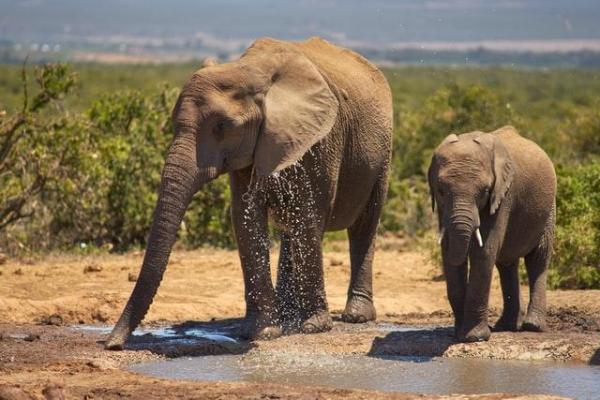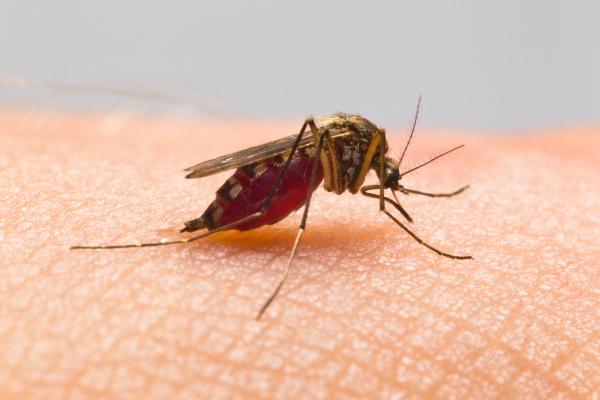
When we think of trunked animals, the first one we might think of is the elephant. This large mammal has a large appendage sprouting from their face which is known as a proboscis. There are other animals with trunks of varying size, some of which appear in place of a nose or seem to emanate from their mouths. The proboscis is tubular, hollow and flexible, but they vary according to each animal since they have differing uses. Some are used to collect food or drink water, others may even be used to regulate temperature.
At AnimalWised, we bring you our list of 10+ animals with trunks, explaining how each animal uses their trunk for survival. We also show you photos of these animals so you can see how amazing they really are.
Types of animal with trunks
In Latin, the word proboscis translates directly into English as ‘trunk’. It is defined as an appendage situated on an animal's head which is elongated and tubular. While we may think of animals with trunks being mammals, there are invertebrates which can also have a proboscis. This means there are insects with trunks, even if we may not always refer to them as such.
Generally, animals with trunks have a keen sense of smell. They can use this to locate food or find out information from their environment, such as the presence of nearby predators. For invertebrates, this ability is believed to be almost exclusively for finding food.
We can categorize animals with trunks into two groups: short and long. However, there is little homogeneity in terms of morphology and proboscises can have varying characteristics:
- Long, muscular, flexible and strong structures
- Can include the upper lip of the animal when they are an extension of the nose
- Retractable, break-off extensions
- Some have tips that prick and inoculate toxic substances
- There are tubes or proboscis covered with cilia and mucus
- Certain muscular or fleshy tubes can be inflated at will of the animal
What are animal trunks for?
Just as there are various characteristics for these formations, they also have various purposes. Among them include:
- Breathing
- Lifting
- Sucking air and water
- Generating sound
- Digging to find food
Examples of animals with long trunks
When we talk about animals with long trunks or short trunks, we are talking about it in relation to their body size. In terms of longest overall, not proportionately, the clear winner will be the elephant.
Elephant
Elephants are characterized by many things, but their proboscis is so important that it provides the name of their taxonomic order. They are in the order Proboscidea and are the only current family in that group. An elephant's trunk is made up of thousands of muscles and tendons, allowing them not only great capacity for movement, but great strength to lift heavy objects.
Elephants use their trunks to breathe, but they can also be used to suck water and spray it over their bodies. This helps to keep them cool and clean, as well as using it to clean other members in their herd. They can pick up food and use their trunk to wrap around logs and other heavy objects. They are also used to communicate with other elephants, something which can be heard in the characteristic trumpeting sound they make.
The elephant trunk also has many olfactory receptors, which they use to smell their environment. The sense of touch is also very sensitive in the trunk, even though it is also be strong. Although their proboscis swings when they walk, they can stretch it all the way to the ground if they want, something incredible when we think about how some can reach 4 meters in height.
Discover some of the most important uses of elephant trunks with our article on how do elephants communicate?

Giant anteater
Another animal with a long trunk is the giant anteater (Myrmecophaga tridactyla). The proboscis of this mammal is part of a prominent snout which has their mouth and nostrils at the end. This animal doesn't have any teeth. Instead, they have a very articulate tongue which is used to suck up ants and other insects for food. It is one of the most unique trunks in the animal kingdom.
Learn about this mammal with a long trunk in our guide to where anteaters live.

Butterflies and moths
With invertebrates, we should mention butterflies and moths. They have an oral apparatus which includes a long proboscis, something which is used in sucking nectar from flowers for sustenance. When the trunk is not in use, it is kept in a coil which looks like a flat spiral from the side. When the animal feeds again, the trunk will unfurl and be stretched out. The photo below shows a moth with an unfurled trunk.
Take a look at our article on fascinating facts about butterflies if you want to know more.

Mosquitoes
Mosquitoes are another type of animal with a long trunk, famously using it to draw blood from animals and humans. This proboscis is needle thin so that it can pierce the skin and other tissues of mammals which are vastly larger them themselves. These mosquito trunks pose a significant danger to humans since they are vectors of disease. Viruses and other pathogens enter into the bloodstream via the trunk from the blood of other organisms stored in its body.
The photo below shows a mosquito feeding on human skin using their trunk.

Proboscis worms
As with the elephant, the name of these animals is also related to one of their key features, i.e. having a trunk. Also known as ribbon worms, proboscis worms are part of the phylum Nemertea. They are characterized by having a fairly long trunk, something they used to quickly catch their prey. It is covered in mucus, meaning they collect their prey by retracting their proboscis with the prey stuck to the mucus.
There is also the phylum Enteropneusta, known more commonly as acorn worms. These worms have a trunk which is an active appendage. It is used to feel the muddy terrain of its environment, also using mucus to collect food (in this case mainly microorganisms and organic matter).
Examples of animals with short trunks
Among the animals with short trunks, we can find the following species:
Tapir
Commonly described as a mammal with a miniature trunk the tapirs are extant animals of the genus Tapirus. The trunk of the tapir can vary in size, depending on the species of the individual. However, all have a keen ability to smell. This is partly because the trunk of the tapir is an extension of their nose. They are an ungulate animal and their trunk is prehensile, meaning it can adapted for grasping and holding objects.

Elephant seal
Going from land to sea, we find the group belonging to the genus Mirounga, usually known as elephant seals. The peculiarity in these is that the trunk is present only in adult males. They develop a proboscis that hangs over the mouth, which they can inflate and use to compete other males in the reproductive season. They can also emit loud sounds through this organ for mating calls or warnings.
This is another mammal with a short trunk as we can see in the photo below.

Saiga antelope
The saiga antelope (Saiga tatarica) is a herbivorous animal that lives in Asia and also has a curious proboscis or proboscis-shaped nose. This trunk is flexible and wide. They live in habitats with changeable conditions, and their nose allows them to filter the dust present in the air of the often dusty terrain they inhabit. In the winter, their trunk is used to heat winter air before it enters the lungs.

Proboscis monkey
Another animal with a short trunk, also finding their trunk is part of their name, is the proboscis monkey (Nasalis larvatus). Although both males and females have a large, bulging nose with fleshy tissue, the male's is usually much larger. When they are angered or even during the reproductive act, the nose swells and reddens. They also use it to make loud sounds when they feel in danger.

Moluccan babirusa and wild boar
Two other animals that have small trunks or pronounced noses are the Moluccan babirusa (Babyrousa babyrussa), a native Indonesian pig. They have two large tusks which grow upwards and can curl round themselves. We also have the wild boar (Sus scrofa), also an artiodactyl, but of the genus Sus, which has a highly developed sense of smell.

Moles and shrews
Moles and shrews also have a muzzle-shaped head extension. In the former, the trunk is quite flexible, while in the latter it is more pointed and has whiskers. In both cases they correspond to extensions in which the animal's nose ends, so that their trunks give them a good sense of smell.

If you want to read similar articles to Animals with Trunks - List of Trunked Animals, we recommend you visit our Facts about the animal kingdom category.
- Fumanal, S. (2012). Proboscis. Virtual biodiversity.
https://www.biodiversidadvirtual.org/taxofoto/glosario/1480 - Editorial team. (2019). Saiga tatarica. Convention on Migratory Species (CMS). https://www.cms.int/es/species/saiga-tatarica
- Curtis, H., Barnes, N., Schnek, A., & Massarini, A. (2008). Biology Panamerican Medical Publishing House: Madrid.
- Hickman, C., Roberts, L., & Parson, A. (2000). Comprehensive principles of zoology . McGraw Hill Interamericana: Spain.
- Royal Spanish Academy. (2020). Trunk .
https://dle.rae.es/trompa - International Union for Conservation of Nature. (2021). Red list of threatened species.
https://www.iucnredlist.org/